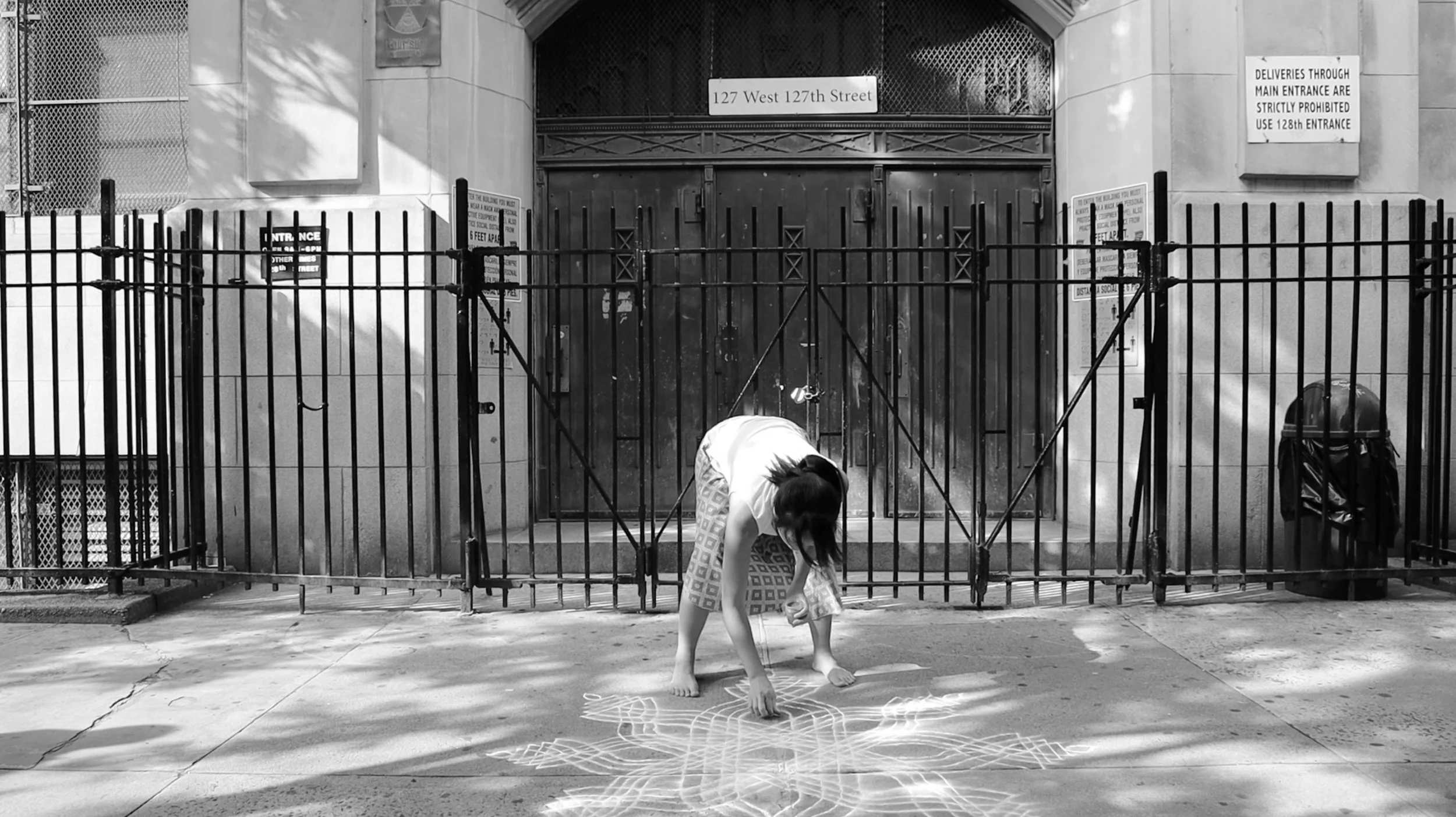Bless This House – Auroville
Bless This House – Auroville is a part of the Bless This House series that explores daily rituals and spiritual practices that bless and safeguard the home and its dwellers. It features a three-channel video of my kolam teacher, Grace Gitadelila, making a series of water-themed kolams outside of her house in the forests of Auroville, India. Also featured in the video is my own kolam-making at various locations in New York City. This video is in the style of poetic, observational documentary and it provides sensory experience for the viewers. It is screened on a 15 feet-long stretched sari that Grace gave me as a gift and which I had worn during our collaborative kolam-making. It forms a part of an installation that incorporates additional saris and jeans that are connected to the sari being utilized as a screen, creating a spiral-shaped kolam on the floor. The saris symbolize a long lineage of women dedicated to preserving the tradition of kolam-making. This installation represents an amalgamation of the East and the West, as well as tradition and modernity. The theme of water is depicted in the kolams featured in the video and in the color of the jeans. Grace believes that water possesses consciousness, and her kolams charge her house with its life-giving energy.
Bless This House – Auroville challenges the notion of cultural appropriation and the insider versus outsider debate. Grace is a Caucasian woman of European descent who was raised in India since she was 9-months old. She speaks Tamil, the local language, and follows Indian customs. She is an expert on the kolam, having written various books on the topic and conducted numerous workshops worldwide. However, some people question her authority on the topic purely based on her race. Although she is practically a native and lives by the customs of the land she grew up in, she is still accused of cultural appropriation. It is essential to differentiate between cultural appropriation and cultural incorporation. Cultural appropriation describes the exploitation by a dominant group of cultural knowledge or expressions originally produced by a subordinate group. In contrast, cultural incorporation refers to the free borrowing and modification of cultural elements that occurs when people of different cultures maintain contact, without involving a power imbalance. I believe that outsiders can offer a fresh perspective on traditions not their own, enriching them through comparison with their own cultural background, and sharing their significance with the world.
The Bless This House series is composed of artwork based on the kolam which is made of edible powders, such as rice flour and turmeric that fade away over time and the Balinese offering which is ephemeral art made of flowers, leaves, food, etc. These practices have deep-rooted connections with matrilineal spiritual traditions. Both the kolam and the Balinese offering are made by women everyday to invoke deities to protect them. They hold a sacred purpose as they bless the home and its dwellers.
My artistic inquiry is centered on the examination of the significance of rituals in people’s lives and the integration of art into their spiritual expressions across diverse cultures. My methodology commences with comprehensive research and documentation of these rituals. Subsequently, I integrate them into my own life, reinterpreting them through various concepts and media. Bless This House encompasses numerous media, including photography, video, drawing, installation, and performance.

